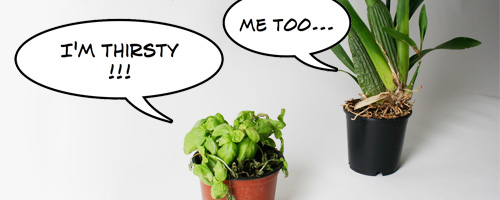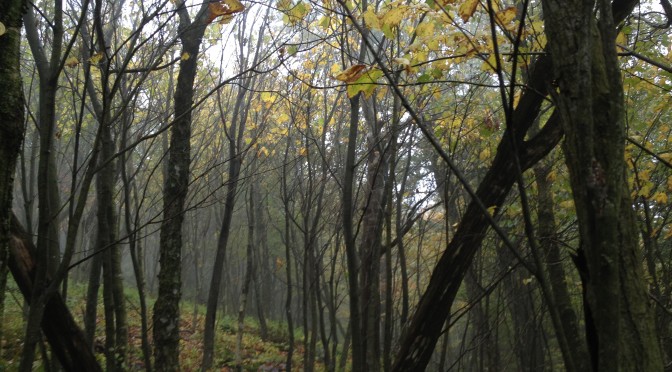By Kar Yern Chin ’18
When Dr. Grace Augustine from James Cameron’s Avatar explains that trees on the planet Pandora are sharing information with each other, using roots like natural fiber-optic cables, she is not far from reality. In 2010, a year after the science fiction movie was released, a review by ecologists Dr. Heil Martin and Richard Karban re-defined the common understanding of plants, disproving the misconception that they are uncommunicative beings. The review, published in Trends in Ecology and Evolution, highlighted that plant communication was finally being accepted by the scientific community. It sparked the excitement of renowned English naturalist Sir David Attenborough, from whom I first heard about the research. Here, I will explore a brief history of plant communication and exciting new research being conducted in the field.

Though the idea of plant communication has only recently been accepted, scientists have researched it for years. The first well-known investigation in the field was conducted by zoologist David Rhoades. In 1985, he placed sugar maple seedlings in a growth chamber, tore off the leaves of one plant, and left them in the chamber for several days. In response to damage, plants normally increase their levels of phenolics and tannins (bitter tasting compounds) as a defense mechanism against herbivores, who are potentially doing the harm.1 Interestingly, Rhoades found increased levels of these compounds not only in the damaged plant, but also in the adjacent ones. This discovery, Rhoades noted, supported his hypothesis of “pheromonal communication between plants in response to damage.”
The skeptical scientific community rejected Rhoades’ research. An influential review by ecologists John Lawton and Simon Fowler in 1985 debunked the idea, known to popular press at that time as “talking trees,” citing problems with experimental design. Scientists were particularly critical of the notion that the seemingly altruistic form of communication between plants could be an outcome of evolution. In other words, why would plants trigger the protection of other plants when they are trying to compete to survive? As these questions remained unanswered, the scientific community moved on from Rhoades’ study.
But interest in the field sparked again in 2000, when more studies were published.2 Eventually, the aforementioned 2010 review by Heil and Karban listed a total of fourteen studies on plant communication, showing scientists’ warming enthusiasm for the field, and in the following years the field picked up momentum. A 2011 Japanese study found that when young intact seedlings of Chrysanthemum cinerariaefolium were exposed to compounds produced by wounded leaves of the same species, the plants expressed enhanced production of pyrethrin, a natural insecticide.3 In 2013, Karban discovered kin recognition within sagebrush plants; the plants responded more effectively to volatile cues produced by “genetically identical clones” compared to “stranger plants” of the same species, creating a greater defensive response against herbivores.4

More research indicates that plant communication isn’t just restricted to chemical-based methods. In 2013, a team discovered electrochemical signaling between plants; the electrochemical surface potential changes of damaged leaves of Arabidopsis thaliana stimulate defense mechanisms in undamaged plants.5 Another group found that a garden pea plant, when exposed to conditions such as drought, sent stress cues to adjacent plants of the same species through the roots.6 Before they noticed the drought’s effects, the other plants adapted accordingly, closing their stomata to reduce water evaporation. This culmination of studies has not only eroded the scientific community’s general skepticism, but also sown enthusiasm in many more researchers. Scientists are calling for more research in other areas, such as acoustic communication in plants.7
Now that plant communication is widely accepted, another question comes to mind: why does it happen? As noted in the past, it seems all too altruistic, conflicting with the tenets of competitive evolution. Some scientists have suggested that the more proper term is actually “plant eavesdropping”: adjacent plants merely pick up what’s happening to the one being harmed and prepare in advance to protect themselves from the impending problem. However, with the field being recent and vastly unexplored, it is difficult to find a possible answer to this question until more in-depth research is conducted. Fortunately, in contrast to those in the 1990s, scientists now are all-too happy to delve into this exciting new field.
Though current understanding on plant communication remains nebulous, it is already breaking new ground on the behavior of plants and challenging our perceptions of them. In time, plant communication may have significant implications in fields like ecology and agriculture. For now, however, this idea has created a new path of research, waiting to be explored.
References:
- Rhoades, David F. “Offensive-Defensive Interactions between Herbivores and Plants: Their Relevance in Herbivore Population Dynamics and Ecological Theory.” The American Naturalist 125.2 (1985): 205. Web. 27 Sept. 2014.
- Karban, Richard, Louie H. Yang, and Kyle F. Edwards. “Volatile Communication between Plants That Affects Herbivory: A Meta-analysis.” Ecology Letters 17.1 (2014): 44-52. Web. 27 Sept. 2014.
- Y. Kikuta et al., “Specific regulation of pyrethrin biosynthesis in Chrysanthemum cinerariaefolium by a blend of volatiles emitted from artificially damaged conspecific plants,” Plant Cell Physiol, 52:588-96, 2012.
- R. Karban et al., “Kin recognition affects plant communication and defence,” Proc R Soc B, 280:20123062, 2013.
- Mousavi, Seyed A. R., Adeline Chauvin, François Pascaud, Stephan Kellenberger, and Edward E. Farmer. “GLUTAMATE RECEPTOR-LIKE Genes Mediate Leaf-to-leaf Wound Signalling.” Nature 500.7463 (2013): 422-26.
- O. Falik et al., “Rumor has it . . . : relay communication of stress cues in plants,” PLOS ONE, 6:e23625, 2011.
- Gagliano, M. “Green Symphonies: A Call for Studies on Acoustic Communication in Plants.” Behavioral Ecology 24.4 (2013): 789-96.
- Heil, Martin, and Richard Karban. “Explaining Evolution of Plant Communication by Airborne Signals.” Trends in Ecology & Evolution 25.3 (2010): 137-44. Web.
